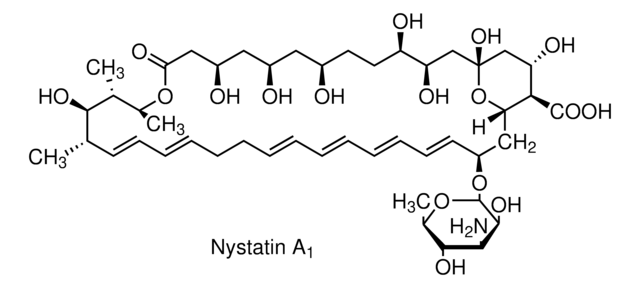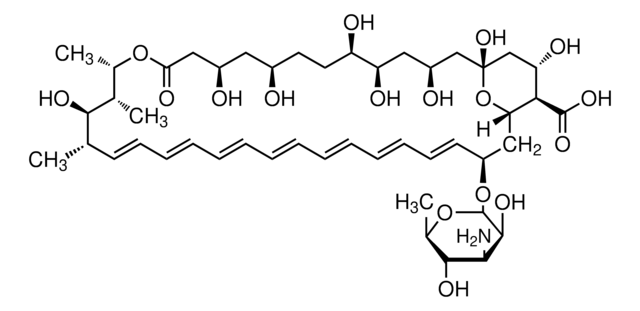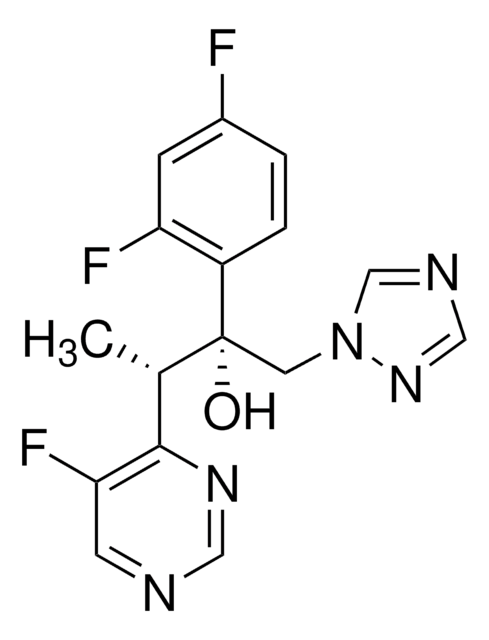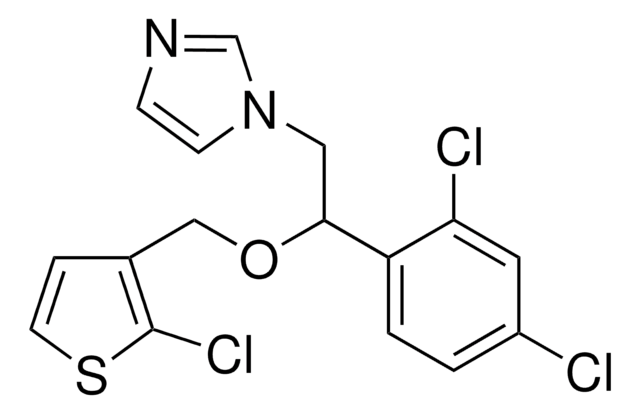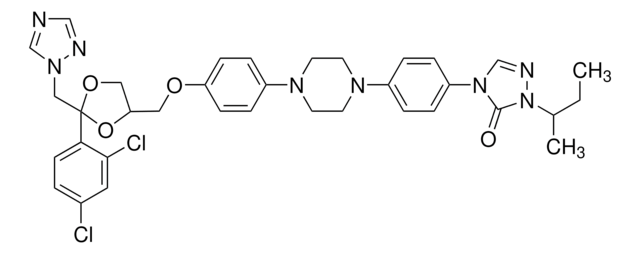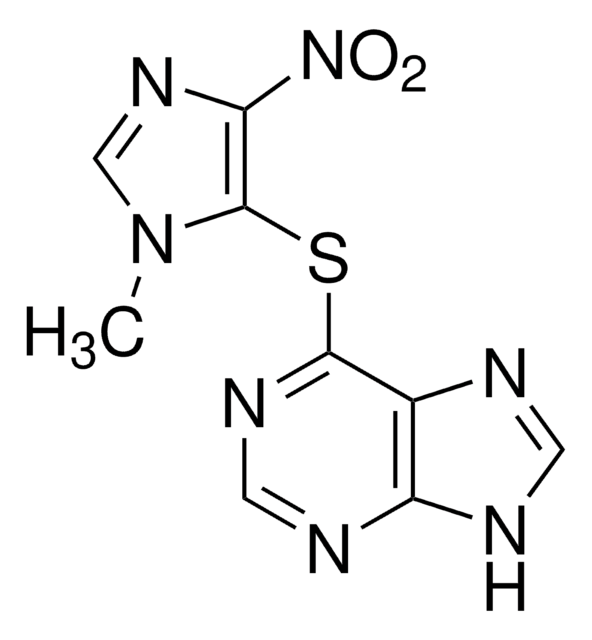SML2574
Candicidin
≥50% (HPLC)
Synonym(s):
Candicidin, Candeptin, Candimon, Levorin, Vanobid
Sign Into View Organizational & Contract Pricing
All Photos(1)
About This Item
Empirical Formula (Hill Notation):
C59H84N2O18
CAS Number:
Molecular Weight:
1109.30
UNSPSC Code:
12352200
Recommended Products
biological source
Streptomyces griseus
form
solid
storage condition
protect from light
concentration
≥50% (HPLC)
solubility
DMSO: 1 mg/mL
storage temp.
−20°C
Looking for similar products? Visit Product Comparison Guide
General description
Candicidin is a polyene macrolide antifungal antibiotic which inhibits large number of fungi. 2 Polyene antifungal antibiotics, such as Candicidin, specifically target cell membranes containing sterols. Thus, selectively targets variety of prokaryotic organisms (such as Candida albicans) and not eukaryotic organisms. Candicidin generates cell membrane damage to Candida albicans (C.albicans) by triggering a rapid efflux of K+ ions. Interestingly, it was found that dosage needed for Candicidin to inhibit growth of stationary phase C. albicans cells is 25 μg/ml whereas log-phase C. albicans cells is only 5 μg/mL. In 1953 Kigman and Lewis performed the first in vivo study with mice to reveal the effects of Candicidin. Their study showed that Candicidin exhibits protective effect against C. albicans, Blastomyces dermatitidis and Sporotrichum schenkii but only a partial protective effect against torulosis and histoplasmosis. LD50 for Candicidin oral administration and intraperitoneal administration in mice were 90-400mg/kg and 2.1-7.0 mg/kg respectively. When comparing the activity of Candicidin to other antifungal compounds in vivo protects 100% of mice with C. albicans infection, whereas usage of twice the amount of Nystatin protects only 60% of the mice. Candicidin may undergo a photoisomerization process, yielding all-trans derivatives of Candicidin when exposed to direct UV light.
Storage Class
11 - Combustible Solids
wgk_germany
WGK 3
flash_point_f
Not applicable
flash_point_c
Not applicable
Certificates of Analysis (COA)
Search for Certificates of Analysis (COA) by entering the products Lot/Batch Number. Lot and Batch Numbers can be found on a product’s label following the words ‘Lot’ or ‘Batch’.
Already Own This Product?
Find documentation for the products that you have recently purchased in the Document Library.
Our team of scientists has experience in all areas of research including Life Science, Material Science, Chemical Synthesis, Chromatography, Analytical and many others.
Contact Technical Service